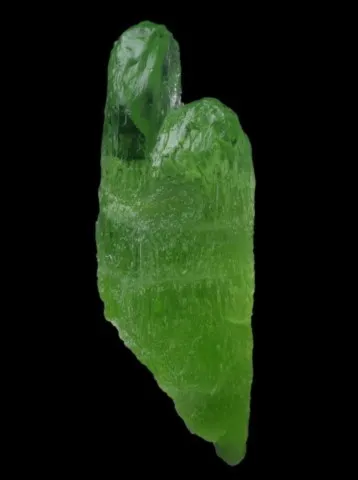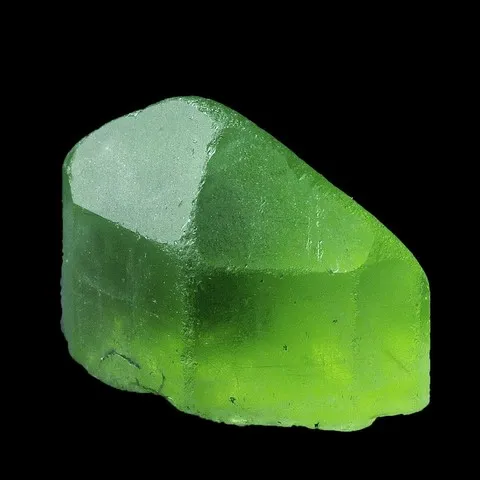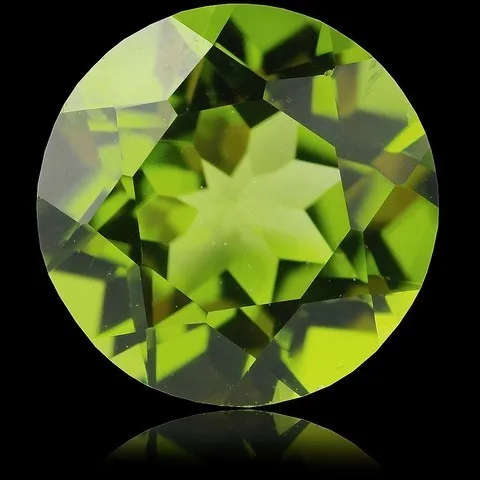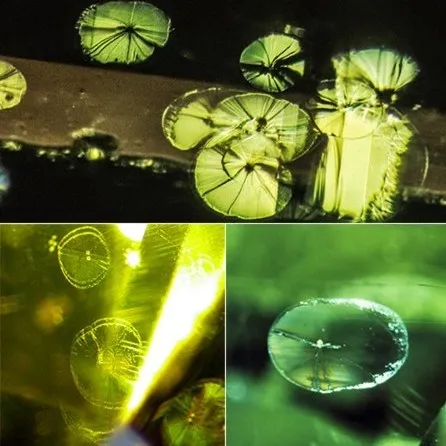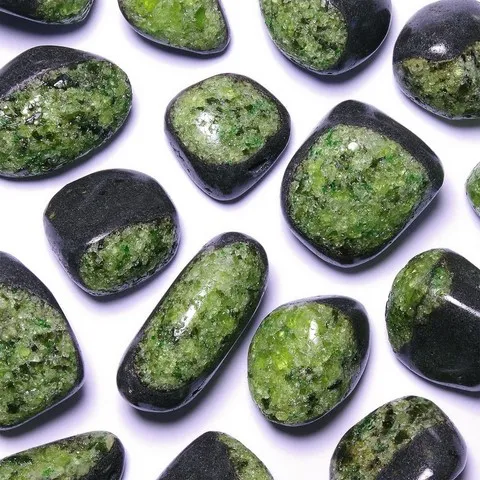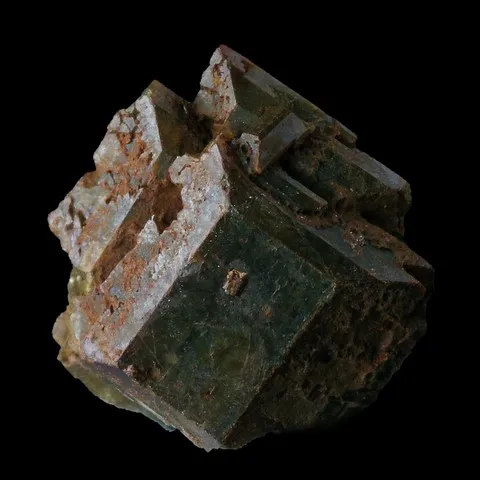OLIVINE
Class : Silicates
Subclass : Nesosilicates
Crystal system : Orthorhombic
Chemistry : X2SiO4
Rarity : Very common
The term olivine refers to a group of minerals of general formula X2SiO4, where X is Ca, Fe, Mg or Mn, which gives rise to several series or continuous solid solutions ; the most widespread being the ferromagnesian forsterite (Mg) - fayalite (Fe) series. Gemmy quality forsterite is also called peridot. Olivine owes its name to its olive-green color. Olivine is constitutive of most ultra-basic rocks (peridotites) and common accessory components of basic magmatic rocks (basalts and gabbros). Subject to the considerable pressures prevailing in the Earth's mantle, the structure of olivine changes and adopts a denser spinel-like structure. This stability of olivine added to its presence in very many meteorites suggests that it is the dominant mineral of the mantle and therefore probably the most abundant terrestrial mineral ! More rarely olivine is a mineral resulting from the thermal metamorphism of some dolomitic limestones, in this case it is always magnesian. The olivine group, however, is not restricted to the only solid Fe-Mg solution. Other cations can integrate the structure :
Ferromagnesian Forsterite-Fayalite Series :
(90 to 100% Mg and 0 to 10% Fe) : Forsterite
(70 to 90% Mg and 10 to 30% Fe) : chrysolite
(50 to 70% Mg and 30 to 50% Fe) : Hyalosiderite
(30 to 50% Mg and 50 to 70% Fe) : hortonolite
(10 to 30% Mg and 70 to 90% Fe) : ferrohortonolite
(0 to 10% Mg and 90 to 100% Fe) : fayalite
Other cations :
- tephroite (Mn2SiO4)
- larnite (Ca2SiO4)
- monticellite (CaMgSiO4)
- kirchsteinite (CaFeSiO4)
- picrotephroite (MnMgSiO4)
- knebelite (MnFeSiO4)
- liebenbergite (NiMgSiO4)
The crystals are frequently flattened, elongated with sharp sides and octahedral terminations, sometimes centimetric. Olivine also occurs often in massive or granular form on the rounded surface, scattered or agglomerated in the rock (cumulates of the dunites). Its color is most commonly greenish yellow to relatively light olive green (forsterite), more rarely brown-green to brownish-gray (fayalite). Under the action of water and atmospheric CO2 or hydrothermal fluids, olivine is easily altered at low temperature in minerals of the serpentine group. It is an important mineral for jewelry, it is an affordable green gemstone and easy to use for entry-level jewelry thanks to its honorable hardness. Olivine is sometimes used as a raw material for refractory bricks, but this use remains anecdotal. On the other hand, forsterite is at the origin of notable concentrations of talc and magnesite which results from its alteration.
Olivine in the World
Olivine in France
In France, forsterite is common in centimetric crystals in many basalts of the Massif Central (Suc d'Eyme, Grand Champagnac, etc...). We should also note the very beautiful automorphic olivine crystals of Mont Croustet, they constitute pretty olive green to brown tabular floaters with perfect shapes (photo on the right) and which can reach dimensions of more than 1.5 cm. Peridotite nodules of a very beautiful green are known in abundance in the basalts of Sauterre (Puy-de-Dôme) and in the projections of Mount Briançon, near Langeac (Haute-Loire).
Twinning and special characteristics
Rare plane {011} with axes of crystals at 60°47 'or {012} with crystal axes at 30°, interpenetration or multiple twinning ; also mentioned on {100}.
Fakes and treatments
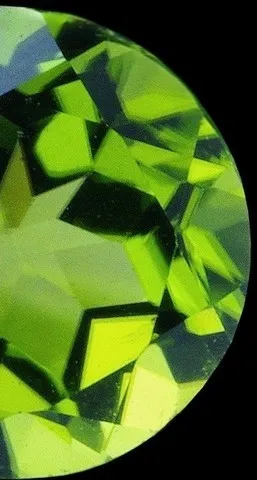
Peridot is one of the rare gemstone never treated because to date no known improvement is possible. The lilypads inclusions are characteristic of peridots of volcanic origin and are natural (expansion and explosions of CO2 inclusions during the rise towards the surface of the peridot in the magma, we speak of decrespitation) this is not linked to a heat treatment. Olivine can be imitated by glass, so be careful with large gemstones. It is a mineral with a strong birefringence, on the gems an important doubling is easily observable with a magnifying glass (doubling facets when the stone is observed by transparency as in the photo on the right).
It should also be noted that synthetic forsterites are produced, they are manufactured in the laboratory by Russians since 1999. However synthetic crystals that are cut for jewelry are blue-violet, color that does not exist for this species in nature... this synthesis is actuallycreate to imitate tanzanite...
Hardness : 6,5 to 7
Density : 3,2 to 3,6
Fracture : Conchoidale
Trace : White
TP : Transparent to translucent
RI : 1,630 à 1,690
Birefringence : 0,040
Optical character : Biaxial +
Pleochroism : Weak
Fluorescence : Sometines bleue
Solubility : Hydrochloric acid
Magnetism : Paramagnetic
Radioactivity : None

